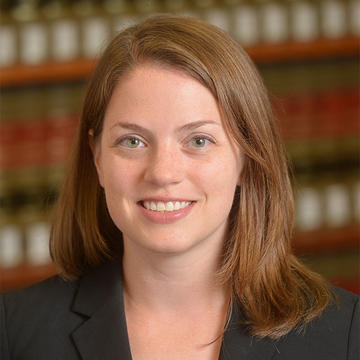Remembering Sandra Day O'Connor
A former O'Connor clerk recalls her inner toughness tempered by good humor and abiding pragmatism
For the self-described “first cowgirl on the Supreme Court,” the term trailblazer is all too apt. Justice Sandra Day O’Connor’s remarkable career was the product of her inner toughness tempered by her good humor, sharp wit, and abiding pragmatism.
Describing the wooden windmills on her family’s beloved Lazy B Ranch, Justice O’Connor explained that they did not have to be beautiful, but they had to work. That same approach might be used to describe her jurisprudence. In her years as the median justice controlling many outcomes in Supreme Court cases, she was guided not by rigid theories but by deep concern for the practical effects of the Court’s decisions. The Court’s decisions, in other words, had to work for people, society, and government.
Justice O’Connor’s concern for people extended also to her clerks. I had the honor of clerking for her in the 2010 term, and throughout the year, she made time to meet visiting family and friends, including ones who joined the early morning “exercise class” she convened in the Court’s basketball court for decades. Generations of clerks had their own new generations welcomed into the O’Connor family with gifts of tiny t-shirts emblazoned with “SO’C Grandclerk.”
Justice O’Connor’s unique background and concern about the future led her to advance a new cause in her extremely active retirement: civics education. After leaving the Supreme Court, she spoke to many audiences about how judges should neither be nor be seen as “politicians in robes.” Having been an elected official and an elected state court judge herself, she warned against electing judges because doing so compromises their judicial independence. But her concern for education stretched beyond just the role of the judiciary. In 2009, she founded iCivics to educate children on the fundamentals of democratic government, meeting them where they are with online games that teach about government and laws. iCivics is “now used by up to 9 million students and 145,000 teachers annually in all 50 states and the District of Columbia.”
In her 2018 statement announcing her withdrawal from public life, Justice O’Connor pointed to civics education as key for the future, arguing that it is “vital . . . for all citizens to understand our Constitution and unique system of government, and participate actively in their communities.” In words that sum up her own career, she emphasized that “[i]t is through this shared understanding of who we are that we can follow the approaches that have served us best over time – working collaboratively together in communities and in government to solve problems, putting country and the common good above party and self-interest, and holding our key governmental institutions accountable.”
Since Justice O’Connor’s retirement from the Court in 2006 and withdrawal from public life in 2018, the divisions on the Court, in government, and in the country have grown deeper. But she was not one to be easily deterred. She saw the fractures coming and set about to lay the groundwork for bridging them.
Justice O’Connor famously said that she was happy to be the first woman on the Supreme Court, but she didn’t want to be the last. Thanks to her, I and others of her later clerks were born into a world where that particular glass ceiling had already been shattered. But Sandra Day O’Connor didn’t stop there. At every stage in her life, she set a high bar for what one can accomplish with hard work, good will, and a devotion to public service. I miss her tremendously but will forever draw inspiration from her example.
